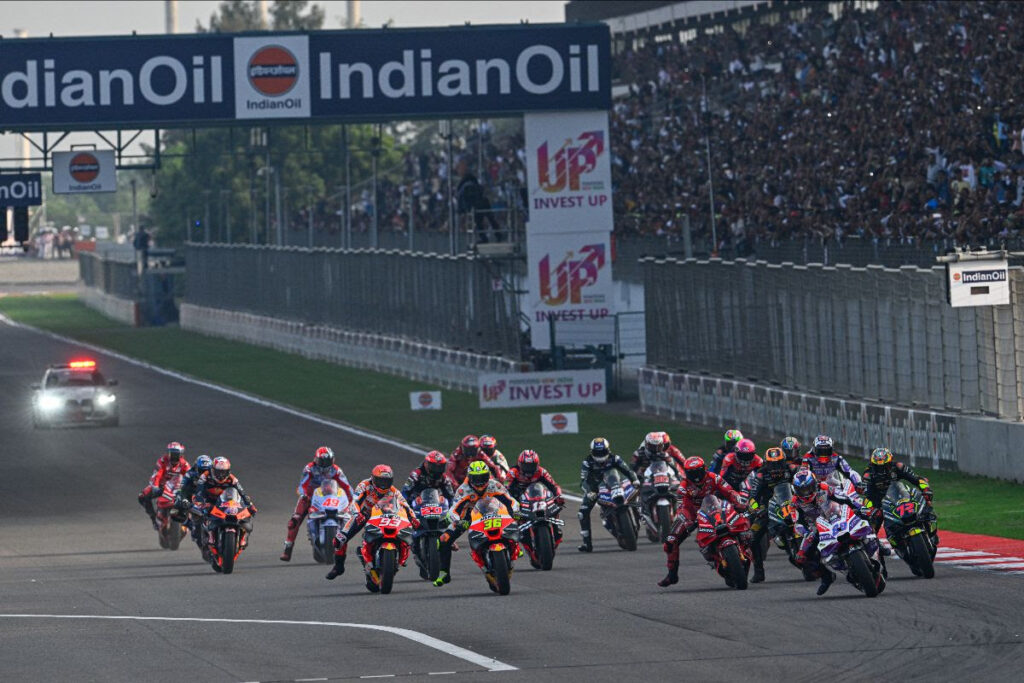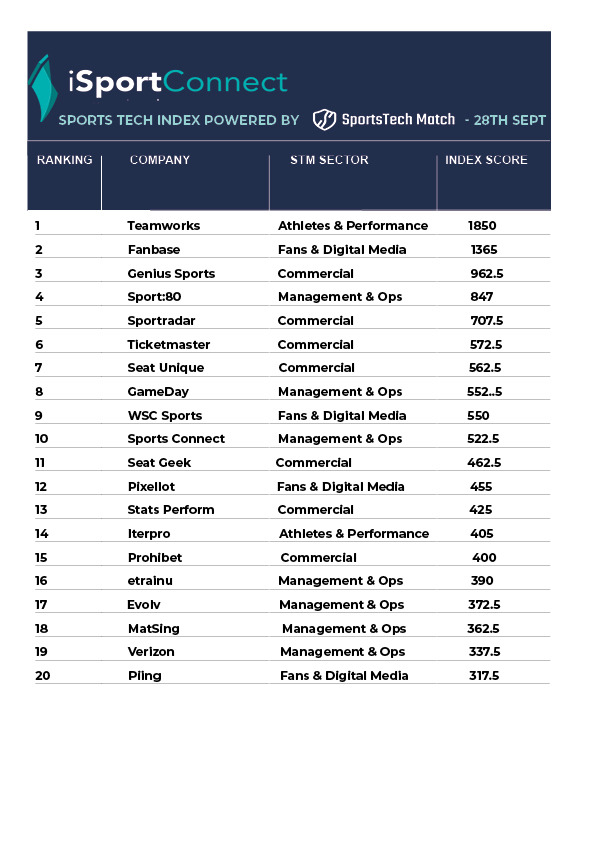Dorna organised the first ever MotoGP in India and the response was overwhelming. iSportConnect spoke with Carlos Ezpeleta, Chief Sporting Officer, Dorna Sports to know more about the MotoGP Bharat and future plans of Dorna.
Why did Dorna choose India?
India is one of the strongest emerging economies in the world and most definitely an important destination for MotoGP as it is the biggest two-wheeler market in the world with a rapidly increasing affinity to premium motorcycle brands.India’s population is accustomed to consuming western brands, product and sports, and we are very excited about India, especially the motorcycling industry as MotoGP will create significant inroads to build the image of professional racing platform and culture which can potentially be the perfect jumpstart for Indian riders/ teams in the foreseeable future. Another crucial aspect which makes India a very important destination is that India has a MotoGP fan base of 54 million. So yeah India has a bright future for MotoGP.
What was the response to the Indian GP?
Its’ been a challenging but amazing week in India. We are thrilled with the result and I think the feeling is common across the paddock as well ls the local authorities.
The expectation was quite big but the response has been really positive both within India and Internationally, all the stakeholders have expressed how happy they have been with the overall result and that’s overwhelming to hear, specially when we know that there is still a huge untapped potential which will take some time.
What were the initial race challenges?
It was the most important and therefore the most challenging event on this year’s calendar, especially with it being the first MotoGP event ever in the country.
It is always challenging the first time we go to any circuit, so you try to work on a priority basis and then start building from there. It is true that a lot of the track works were finalized shortly before the event but the reality is that the circuit impressed everybody and that the riders loved the track. This is the same with all the other stuff, a lot of it was challenging because of the timings but at the end the results were positive.
What kind of investments can you expect from India considering motorsports is still not that popular?
I have to say that the size and power of the Indian market has really overwhelmed us. There is so much that can be done and so much interest and having been able to do this first event has really changed the situation. Everybody wants to be a part of Bharat GP. It is true that motorsport is still a young sport in India but we think it is very well suited for the market. MotoGP is hugely dynamic, young, entertaining, high-energy, unpredictable, with the action being intense and the sporting format being short, it is perfectly suited for India, being a country with hundreds of millions riding motorbikes everyday.
We were also very happy to see all the support that MotoGP has from the Indian Government in general and Uttar Pradesh specifically. We want to thank them all, but specially Honourable CM Yogi Adityanath. It’s great to see that they understand all that MotoGP can bring, not only a huge global sporting event, but socially, industrially and economically. We are already engaged with them to see how we can do so much more next year.
Kazakhstan GP didn’t go through so India was the sole addition. You also signed an MoU with the Saudi Arab govt. but it hasn’t shown up in the 2024 calendar. What happened in these two places?
Unfortunately Kazakhstan’s first event had to be postponed till 2024, that made India take all the spotlight this year! You are right that we had signed an MoU with Saudi Arabia last year but it was already announced that it wasn’t for the upcoming seasons. We knew that it was a very long project in which they are planning to build a completely new venue which I’m sure will impress the whole world. These things take time, specially when new circuits have to be built. There are many new countries on the pipeline.
What plans does Dorna have for the Indian talent and development of motorsports in India?
There is no other sport that invests as much as Dorna does into createing platforms for the development of young riders around the world.Specifically in Asia where we have invested heavily in the past 10 years with the Asia Talent Cup which provides a chance for the most talented young riders in Asia to make their first steps on the Road to MotoGP and are promoted to World Championships and that too free of charge and this is an asset for young Indian riders who want to make a future in MotoGP. Also, now with the MotoGP Bharat, there is an event for the young riders to see and touch, and dream about participating in which will make it a dream for more and more kids. The FIM MiniGP World Series is also a great project and we hope that will consolidate in India in the near future. In the long term, we want to have a strong national series with FMSCI in India which will also be a great opportunity for young talent.
What changes were done on the track in India?
Buddh International Circuit was created for F1 over 10 years ago, but it did apply for an FIM (MotoGP) Homologation at that time as well, so many things had been taken into account initially. Since thenMotoGP safety requirements have increased further and the track has had to undergo some changes for it to be suitable for MotoGP bikes which ride at speeds over 350KMPH. Multiple technical, civil and tech changes were carried out on the circuit and track which havemade one of the very best in the world circuit. Safety is of paramount importance and a dedicated team of track experts from India and around the world were on the job. The riders loved the layout and enjoyed it.
What was offered to the Indian fans at the circut?
MotoGP has made it clear how much we care about our fans and their experience at MotoGP events. This year MotoGP has implemented a new format specifically targeted at getting the fans closer to the show and their heroes, with the MotoGP Sprint on Saturday, and the new meet and greets with the riders.
Asides from experiencing the best morosport in the planet, the fans were also able to get some really cool F&B experiences, great music, see some of the hottest celebrities in India, attend autograph sessions from the rides and many other things. When the national anthem of India played during the grid ceremony and all the fans were singing and chanting, I think everyone got goosebumps, at least I did! I think it’s one of the coolest opening ceremonies we’ve had all year.
“MotoFluencer”
The Promotersran a contest by inviting and engaging with moto enthusiasts and other key moto influencers to create the most engaging UGC moto- content and have thrown them a challenge to create shareable content. The 5 most engaging ” Motofluencers” got an exclusive pass and the privilege to be a part of the paddock and other restricted access race/ track zones.
“Women Riders”
There’s been a significant ride in Women riders and MotoGP Bharat respect the spirit and passion of these new breed of riders. The promoters have been focusing on felicitating female riders across our events and have taken up a special initiative to onboard the leading women riders/ influencers to share their ride experiences. A special initiative to form a Training School for female riders is in discussion too.
“VIP Village/ Fan Zones”
Leading brands and event agencies actively engaged with the fans. This was indeed a weekend which saw a lot of engagement, experiences, and action apart from the high adrenaline race on the track.






